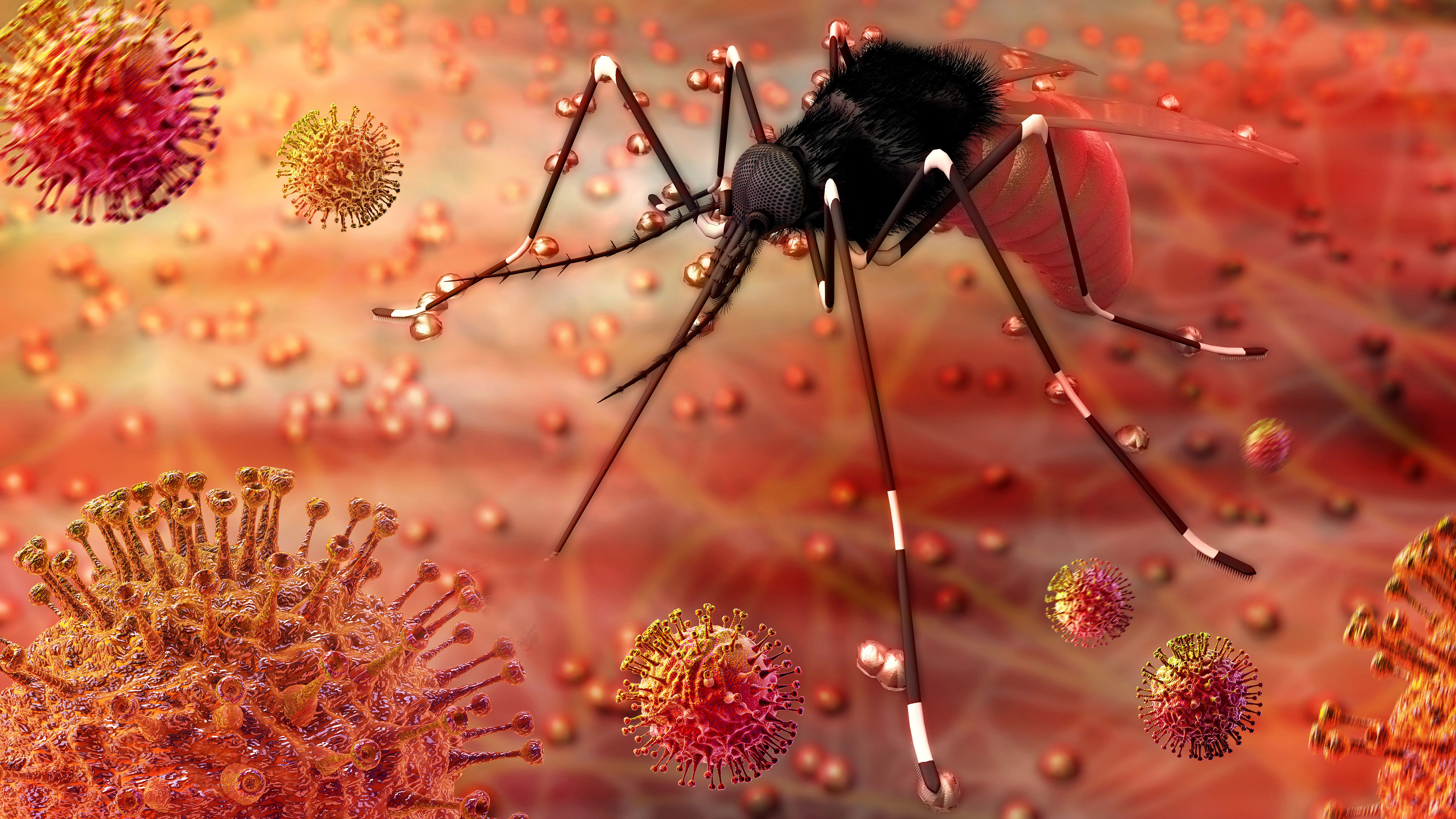
Representative image of a mosquito.
Credit: iStock Photo
In recent years, the global landscape of public health has been increasingly marred by the relentless spread of mosquito-borne diseases, notably dengue fever and its virulent counterparts. The rise in dengue cases, alongside other formidable adversaries like malaria and Zika virus, paints a grim picture of the challenges faced by healthcare systems worldwide. Amidst this alarming surge, let’s delve into the scientific intricacies of mosquito attraction, exploring the subtle chemical cues that lure these disease vectors to human hosts. Understanding these mechanisms at a molecular level is pivotal, offering a beacon of hope in the fight against these deadly diseases. This elucidation not only enhances our knowledge but also serves as a cornerstone for innovative strategies, making this exploration imperative in the ongoing battle to safeguard global health.
Recent scientific endeavours have elucidated the intricate interplay of biochemical factors governing this phenomenon. The convergence of disciplines such as molecular biology, entomology, and chemistry has unravelled the complexities of mosquito olfaction, shedding light on the subtle cues dictating their host preferences. Mosquitoes, predominantly female Aedes aegypti and Anopheles gambiae, exhibit an acute sensitivity to carbon dioxide (CO2) gradients. Their specialised olfactory receptors are finely tuned to detect minuscule fluctuations in ambient CO2 levels, guiding them towards potential blood sources. This
evolutionary adaptation ensures the survival and reproductive success of these vectors by pinpointing hosts with remarkable precision.
Recent studies have spotlighted the role of human skin pH as a pivotal factor in mosquito attraction. Individuals with lower skin pH levels, characterised by higher proton concentrations, have been identified as preferential targets. The molecular basis of this phenomenon involves the modulation of ion channels and olfactory receptors on the mosquito antennae, responding to specific acidic cues emitted by the human epidermis. Human sweat, a complex mixture of organic compounds, serves as a potent mosquito attractant. Compounds such as lactic acid, uric acid, and ammonia act as volatile organic compounds (VOCs) that mosquitoes discern with remarkable acuity. These chemical constituents, originating from eccrine and apocrine glands, generate a unique odour footprint, facilitating the identification of potential hosts amidst environmental odours. Highly specialised olfactory receptors are finely attuned to these specific VOCs, enabling them to discriminate between individuals based on their sweat composition. Understanding the intricacies of mosquito attraction at the molecular level holds profound implications for vector-borne disease control. Topical formulations, infused with active ingredients like DEET or Picaridin, create a protective barrier on the skin, masking the body’s attractive odours that lure mosquitoes. By disrupting the insects’ olfactory senses, these creams deter mosquitoes from landing and, consequently, significantly reduce the risk of disease transmission. Their portability and ease of application empower individuals, especially in high-risk regions, offering a frontline defense against relentless mosquito attacks.
Harnessing the natural attraction of mosquitoes to carbon dioxide can be a resourceful way to combat their presence. By fermenting sugar water in an open container with yeast spores, a process that generates carbon dioxide, an effective homemade mosquito trap can be created. The emitted carbon dioxide acts as a lure, drawing mosquitoes towards the concoction. Once attracted, the insects become trapped within the fluid. This simple yet ingenious method capitalises on the own instincts of mosquitoes, offering an eco-friendly and inexpensive solution to reduce their population and mitigate the risks of mosquito-borne diseases. As per Nature journal, scientists discovered that human odour is rich in long-chain aldehydes, activating a specific olfactory glomerulus in the mosquito brain. This activation, in conjunction with a broadly tuned glomerulus, propels robust host-seeking, elucidating the preference for human over animal odour at a distance. This seemingly simple pattern underscores the complexity of underlying stimuli, suggesting sparse coding as a fundamental feature of innate olfactory responses, even to multicomponent blends.
Although the identified glomerulus (H glomerulus) enhances host-seeking, silencing it remains a challenge. The H glomerulus, representing the primary human-biased signal, is integral to discriminating between humans and animals. However, other glomeruli, especially those responding to high odour concentrations, may contribute. Notably, even mosquitoes lacking certain receptors are still attracted to host odour, indicating the involvement of alternative olfactory pathways.
(The author is a research scholar at BIT, Mesra, Ranchi.)